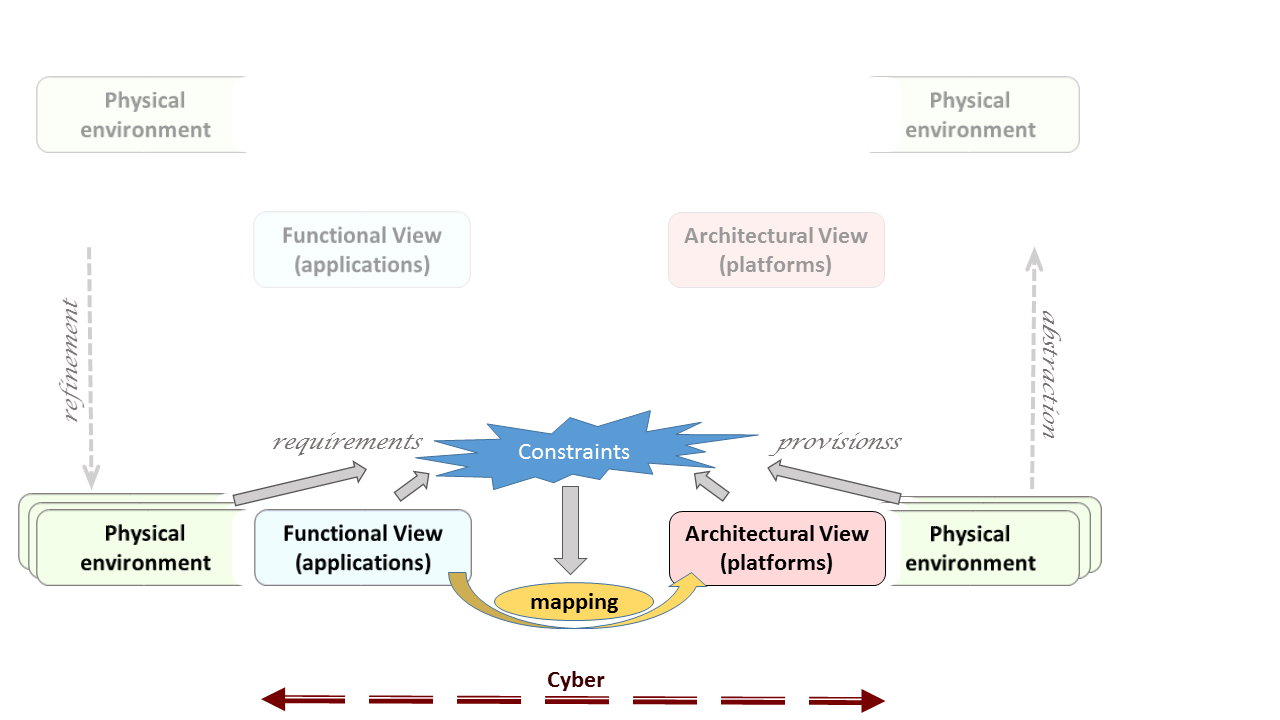Section: Overall Objectives
Overall Objectives
The Kairos proposal ambitions to deal with the Design of Cyber-Physical Systems (CPS), at various stages, using Model-Based techniques and Formal Methods. Design here stands for co-modeling, co-simulation, formal verification and analysis activities, with connections both ways from models to code (synthesis and instrumentation for optimization). Formal analysis, in turn, concerns both functional and extra-functional correctness properties. Our goal is to link these design stages together, both vertically along the development cycle, and horizontally by considering the interactions between cyber/digital and physical models. These physical aspects comprise both physical environments and physical execution platform representations, which may become rather heterogeneous as in the cases of the Internet of Things (IoT) and computing at the edges of the gateways. The global resulting methodology can be tagged as Model-Based, Platform-Based CPS Design (Fig.1).
CPS design must take into account all 3 aspects of application requirements, execution platform guarantees and contextual physical environment to establish both functional and temporal correctness. The general objective of Kairos is thus to contribute in the definition of a corresponding design methodology, based on formal Models of Computation for joint modeling of cyber and physical aspects, and using the important central concept of Logical Time for expressing the requirements and guarantees that define CPS constraints.
Logical Multiform Time. It may be useful to provide an introduction and motivation for the notion of Logical Multiform Time (and Logical Clocks), as they play a central role in our approach to Design. We call Logical Clock any repetitive sequence of occurrences of an event (disregarding possible values carried by the event). It can be regularly linked to physical time (periodic), but not necessarily so: fancy processors may change speeds, simulation engine change time-integration steps, or much more generally one may react with event-driven triggers of complex logical nature (do this after 3-times that unless this...). It is our belief that user specifications are generally expressed using such notions, with only partial timing correlations between distinct logical clocks, so that the process of realization (or “model-based compilation”) consists for part in establishing (by analysis or abstract simulation) the possible tighter relations between those clocks (unifying them from a partial order of local total orders to a global total order). We have defined in the past a small language of primitives expressing recognized constraints structuring the relations between distinct logical clocks. This language (named CCSL for Clock Constraint Specification Language), borrows from notions of Synchronous Reactive Languages, Real-Time Scheduling Theory, and Concurrent Models of Computations and Communication (MoCCs) in Concurrency Theory altogether. Corresponding extensions of Timed Models originally based on single (discrete or continuous) time can also be considered. Logical Time is used in our approach to express relation constraints between heterogeneous models, of cyber or physical origin, and to support analysis and co-simulation. Addressing cyber-physical systems demands to revisit logical time to deal with the multi-physical and sometimes uncertain environments.
In the following sections we describe in turn the research agenda of Kairos on co-modeling, co-simulation, co-analysis and verification, and relation from models to code, respectively.



